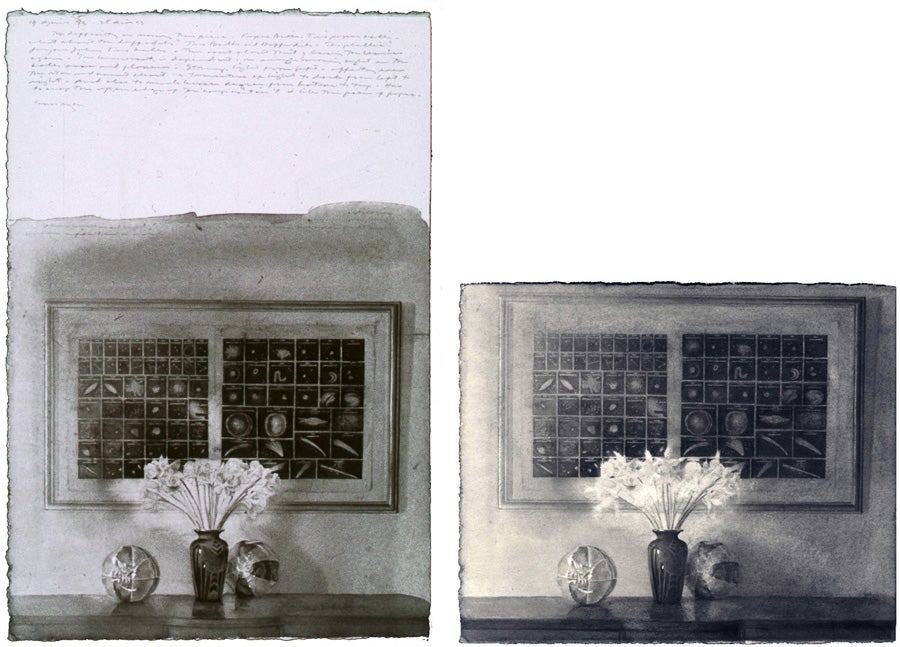Charles Ritchie, Interior with Stack of Journals, work in progress, second state, watercolor and graphite on Fabriano paper, 4 x 6″.
Risk: Turning Pages, Part 2
When is a work of art complete? When is it overworked? When is the artist signing off prematurely; too easily satisfied? These are difficult questions that permeate the core of painting.
My online journal entry on 1 June examined the abandoned watercolor, Interior with Stack of Journals and my plans to reinvestigate the image on another sheet. Through the summer I have continued work on the second attempt (see above), taking advantage of the period when the early evening light enters the west window of my studio. As the season comes to an end, and the specific lighting on my subject drifts away, I find myself pleased with the work. It has reached a plateau, as many drawings do; very close to way I had envisioned it, with some surprising details evolving; the mirror on the desk reflecting a bit of interior, for instance. However, the big improvement is that the brightness of the landscape has remained; far preferable to the overworked landscape in the previous version.
A plateau can be dangerous, though. One might easily convince oneself the work is done. At any point along the creation of an image there are times of balance and imbalance. I consider the present manifestation of Interior with Stack of Journals (above) a balanced composition, but not yet finished. My major dissatisfaction is that I want the interior to be darker in very specific places; more like my most recent preparatory journal sketch (Book 130, 11 May 2008). To accomplish this I will apply wash; not too dark not too light. If done just right it will increase contrast with the light from the window while integrating details and further unifying the composition.
Time is short, though. I prefer to work in front of my subject so I must make my move in the next few weeks or leave the project until next May when the same lighting situation returns. I don’t like to work purely from memory in a case like this one. The visual reinforcement of the subject cultivates courage to take the necessary risk. I have found that the best response to the present situation is to put the work away for a while, get involved in many other drawing and printmaking projects. In the next month, I will forget the problem and then surprise myself when I finally make my move to finish.
One might recall the well-known sequence of photographs in which Henri Matisse documented his Large Reclining Nude (final state seen here) through twenty-two states during a six month period in 1935. I see numerous places Matisse might have stopped his work that could be seen as more successful than the one he chose as a culmination. Even the best artists are challenged by the “when is it finished” question. It’s also important to note that certain media facilitate continual change; Matisse used oil paint for his Large Reclining Nude, a very forgiving medium. Watercolor is different. One cannot scrape out with ease or paint over without damaging the luminosity. Watercolor ups the ante. To continue working my drawing carries the risk of overworking it. I could be faced with starting over again.
In 1994, I took a risk with my drawing, Daffodils with Astronomical Chart. Tearing off the upper section of the sheet, I painted a final layer of darkness, completing the work with a move that I think improved it significantly. (To be continued)

Charles Ritchie, Daffodils with Astronomical Chart, (left) early state c. April 1993, (right) 1995, drawing completed, watercolor, graphite and pen and ink on Fabriano paper, 4 11/16 x 5 1/2″, note: left image is taken from a slide; color and tone are inaccurate. The finished drawing is in the collection of the Butler Institute of American Art, Youngstown, Ohio.